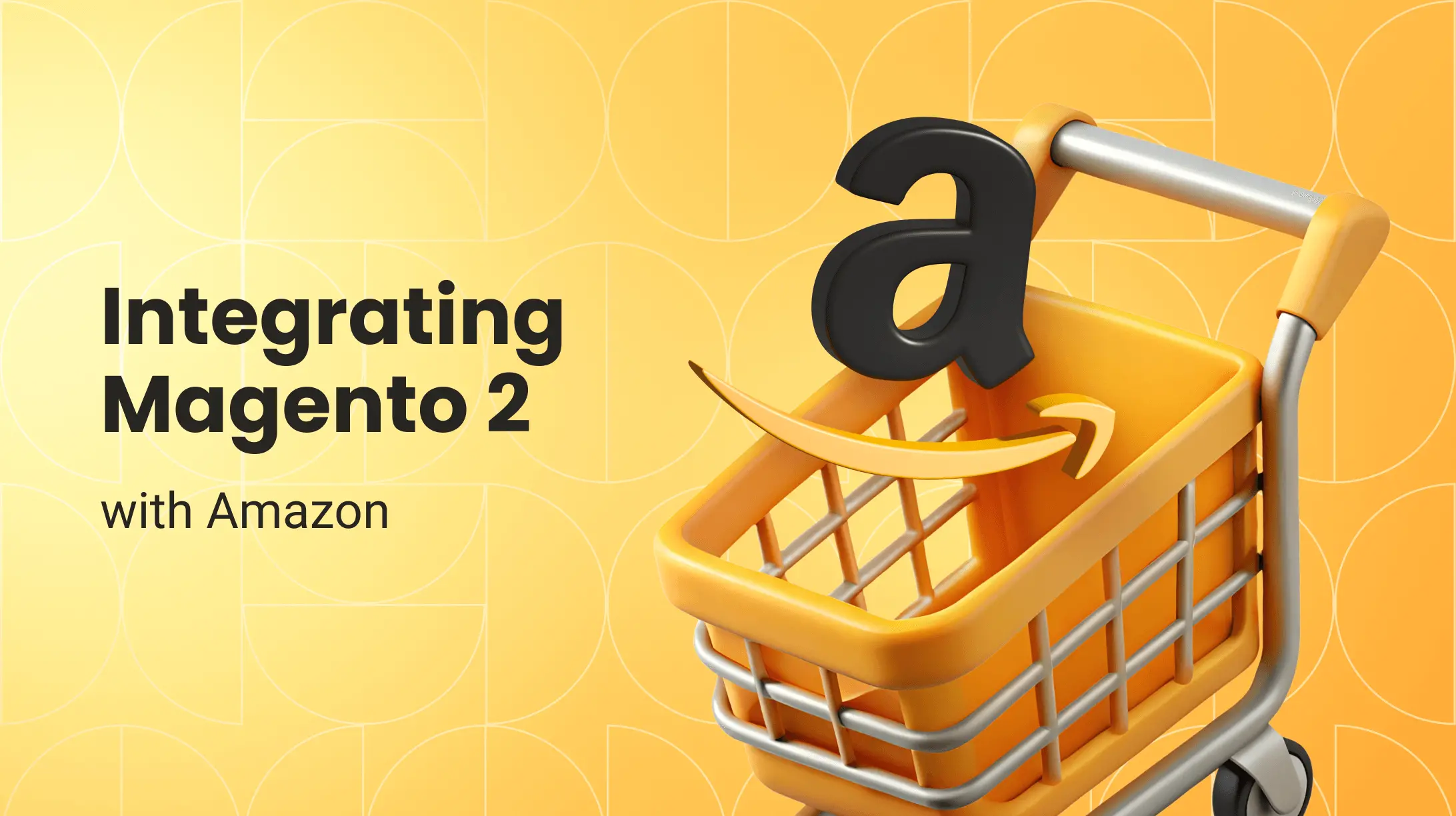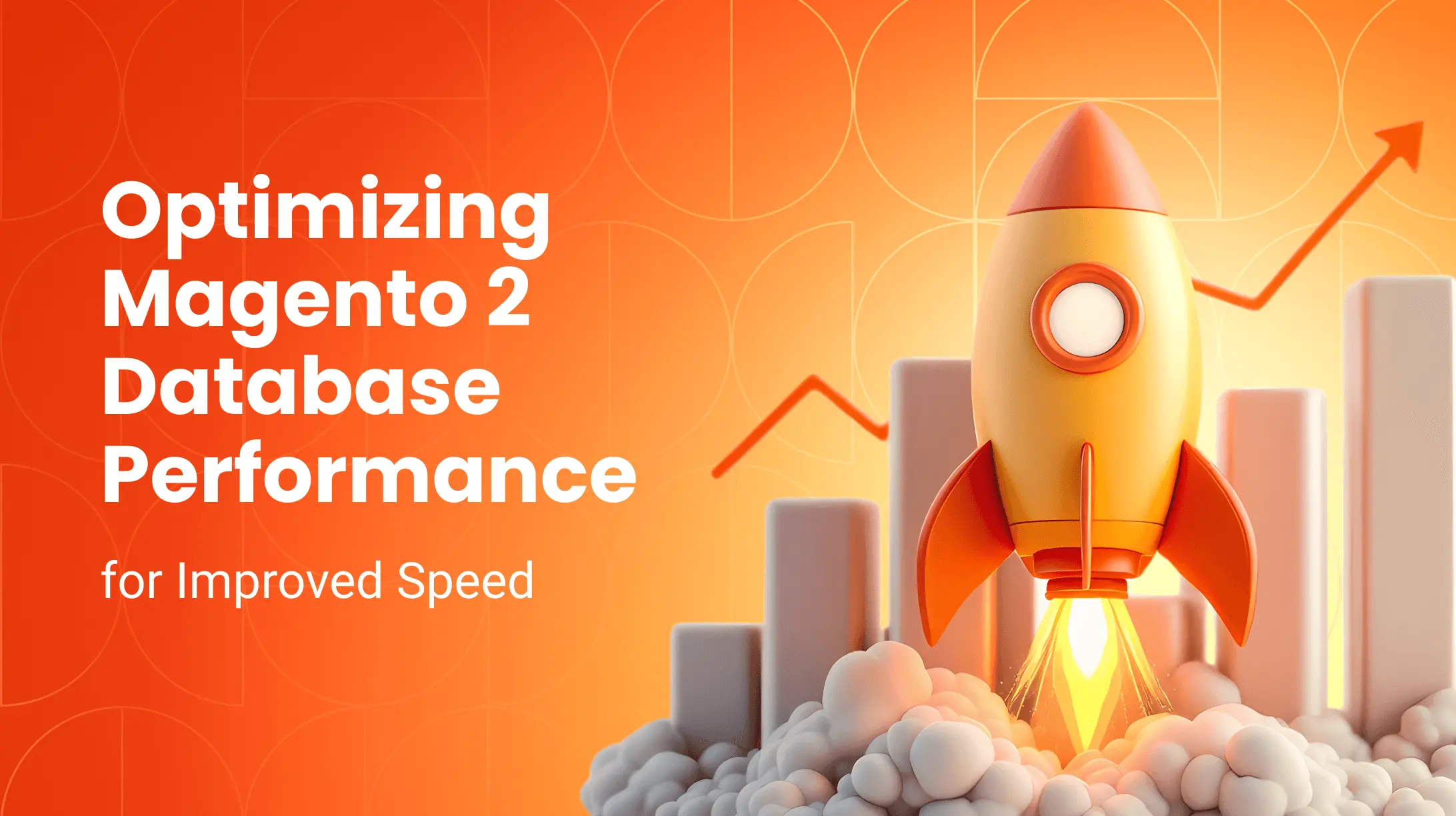0%

With over 50% of online product searches starting on Amazon, it stands as a dominant marketplace businesses can’t ignore. However, many retailers struggle to manage multiple sales channels efficiently. Integrating Magento 2 with Amazon offers a solution, streamlining operations and expanding market reach.
This article provides a step-by-step guide to optimize your marketplace selling and offer strategies to overcome common challenges and maximize the potential of both platforms.
What is Magento Amazon Integration?
Magento Amazon integration is the process of connecting the Magento e-commerce platform with Amazon's marketplace.
This integration synchronizes inventory, orders, and product listings, allowing businesses to efficiently manage their operations across both platforms. It enables sellers to reach a broader audience, enhance sales, and optimize their e-commerce strategies, particularly in achieving seamless fulfillment.
Benefits:
- Expanded Reach: Access a wider audience by showcasing products on Amazon.
- Increased Sales: Boost sales through exposure to Amazon’s customer base.
- Centralized Management: Streamline operations with synchronized inventory and orders, leading to improved fulfillment efficiency.
- Efficiency: Reduce manual tasks and errors by automating processes.
- Scalability: Easily scale your business as demand grows.
- Competitive Edge: Stay ahead with optimized strategies and insights.
Why Choose Magento Amazon Integration?
Magento Amazon integration can offer several advantages over other e-commerce platforms, as well as make it easier to run your online shop as a whole. Let’s take a closer at some of the biggest benefits that Magento 2 integration with Amazon has below:
1. Expand Your Offerings
As an e-commerce business, the flexibility to expand your inventory as desired is a crucial feature. By connecting Magento 2 with Amazon, you’re able to unlock the wide range of potential customers that Amazon already possesses. As a trusted, massive marketplace, you’ll be able to reach a much broader audience on Amazon. Integration can open many new avenues for growth, as well as position your products in front of a diverse customer base.
2. Save Time and Money
Another huge benefit of integration is the resources that it can save you. As an online business owner, you likely know firsthand how resource-intensive managing separate platforms can be. With Amazon and Magento 2 integration, you'll also find synergy when linked with your ERP system. Integration allows for the synchronization of product listings, inventory, and order processing, which can also go a long way toward reducing errors. This automation not only can save significant time but can also help your business reduce its operational costs, allowing for the better allocation of resources and improving fulfillment strategies.
3. Keep Your Orders Organized
To reach maximum success, e-commerce platforms must always make customer service a high priority. Good customer service begins with organization. If your transitions are hard to keep track of or if your inventory is disorganized, providing high-quality customer service can become challenging. Amazon Magento integration ensures that the orders you receive on either platform remain consolidated and carefully managed. A centralized order management system not only prevents confusion but also facilitates more efficient order fulfillment. Whether the order originates from your Magento store or Amazon, you have a unified system to process and track orders systematically. This integration supports faster fulfillment times, enhancing customer satisfaction.
4. Track Customer Preferences and Trends
To best serve your customers, you must first understand their needs. Insight into current market trends is vital for making informed business decisions. With Magento integration, you’ll be able to gain valuable insights into your customers’ behavior and trends. Magento 2’s platform provides analytics that helps with key tasks like:
- Tracking sales performance
- Pinpointing popular products
- Providing insight into customer preferences
Analytics provide the data that you need to make better decisions for optimizing your product offerings and marketing strategies, allowing you to stay ahead of the competition.
5. Centralize Your Data and Analytics
Magento and Amazon integration centralizes your data and analytics, conveniently storing it all in one location for simple access. This serves as a centralized hub where you can access all of your customer data, transactions, and other key analytics. A centralized approach eliminates the need to navigate through multiple platforms and provides a holistic view of your business performance, aiding in quicker decision-making and the formulation of more effective business strategies.
Step by Step Integration Magento Amazon
Integrating your Magento 2 shop with Amazon isn’t complicated. Here are the steps required below:
1. Create Your Amazon Seller Central Account
The first step of this process is simply setting up your Amazon Seller Central account, so you can sell on Amazon. Be sure to provide all required information, ensuring accuracy.

2. Install Your Magento Amazon Connector
Once your Amazon Seller Central account is set up, you’ll then need to select your desired Magento 2 integration extension. It’s crucial that you select a reliable extension that aligns with your business requirements and long-term goals.
3. Connect Your Extension
Integrating your Magento 2 shop with Amazon is fairly straightforward once you have your extension. To connect your Magento 2 store to your Amazon Seller account, you must input key details including access keys and merchant IDs to establish a secure connection between the two platforms. These credentials serve as the bridge, allowing data to flow seamlessly between Magento and Amazon.
4. Customize And Test Your Magento Integration
The fourth step involves mapping and matching your Magento products with their corresponding counterparts on Amazon. Before you launch, it’s critical to ensure that all of your product attributes, pricing, and inventory are synchronized accurately. This step is critical for maintaining consistency and avoiding discrepancies between your Magento store and Amazon listings.
5. Test Your Integration
Next, you’ll need to actually test your integration. Before your store ever goes live, you should conduct tests to ensure that all business data is centralized accurately between Magento and Amazon. Some key aspects to test should include:
- Product listings
- Order processing
- Inventory updates
- Customer analytics
Once all necessary testing has been conducted, you’re finally ready to launch your store!
Existing Extensions for Magento Amazon Integration
Integrating Magento 2 with Amazon can be streamlined with a variety of powerful extensions, each offering unique features to enhance your e-commerce operations:
-
M2E Pro: This popular extension offers comprehensive tools for synchronizing inventory, pricing, and orders between Magento and Amazon. It ensures real-time data updates and streamlines fulfillment processes.
-
CedCommerce: Known for its intuitive interface, CedCommerce facilitates real-time synchronization of products, pricing, and inventory. It also offers order management, automatic product listing, and multi-account support.
-
Magento Amazon Sales Channel: Officially provided by Magento, this extension enables centralized management of your Amazon store. It offers features like listing improvements, automated pricing, and performance monitoring.
-
Amasty Amazon Integration: Known for its comprehensive features, Amasty's extension supports product listing, inventory updates, and order management. It also offers advanced reporting and analytics to help you make informed decisions and enhance fulfillment efficiency.
Key Takeaways
As you launch your store, conducting thorough testing and having a detailed plan for integration must remain the top priority. An organized launch allows you to make the most of your new market potential and establish your business as a trusted e-commerce vendor.
Here at Transform Agency, we’ve been working to improve the world of online shopping since 2009. Whether your e-commerce business is large or small, we can help provide you with the tools required to make it a success. We offer a wide range of services, including:
- E-commerce site development
- Site customization
- Optimization
- Migration
- Support and maintenance
Contact us today to request a quote!
FAQs
How do I integrate Magento 2 with Amazon?
To integrate Magento 2 with Amazon, you need to use specific extensions like M2E Pro, CedCommerce, or Magento Amazon Sales Channel. These tools help synchronize inventory, manage orders, and automate pricing between the two platforms.
What are the benefits of Magento Amazon integration?
Integrating Magento with Amazon allows you to expand your market reach, streamline order management, and maintain consistent inventory across channels. This leads to increased sales and operational efficiency.
How can I integrate Amazon Pay into Magento 2?
To integrate Amazon Pay with Magento 2, you need to install the Amazon Pay extension. This can typically be done through the Magento Marketplace, providing your customers with a secure and convenient payment method.
Are there any costs associated with integrating Magento 2 and Amazon?
While Magento itself is open-source, there may be costs associated with purchasing and using specific integration extensions, as well as any transaction fees from Amazon.
What should I consider when choosing an integration extension?
When selecting an integration extension, consider factors such as ease of use, features offered, support for multiple Amazon accounts, and cost. It's important to choose an extension that aligns with your business needs and goals.

Written with the assistance of Sergey Girlya
Adobe Commerce Business Practitioner | Certified PSM & PSPO at TA
Sergey ensures project success by validating business cases, defining success metrics, and identifying sustainable benefits. His proactive approach leverages existing systems, processes, and data to deliver additional value. Serge excels in planning, executing, monitoring, and controlling all aspects of the project lifecycle, ensuring meticulous attention to detail and strategic oversight.
Sergey ensures project success by validating business cases, defining success metrics, and identifying sustainable benefits. His proactive approach leverages existing systems, processes, and data to deliver additional value. Serge excels in planning, executing, monitoring, and controlling all aspects of the project lifecycle, ensuring meticulous attention to detail and strategic oversight.


